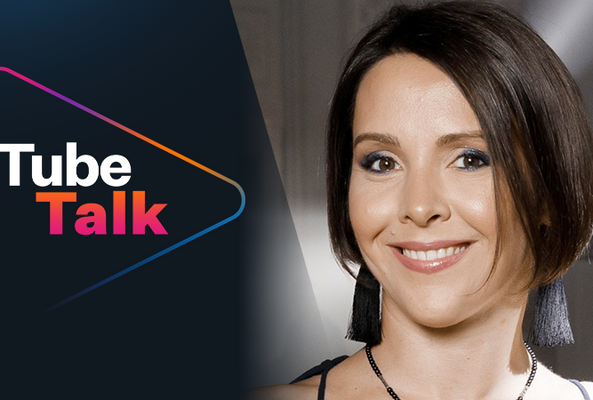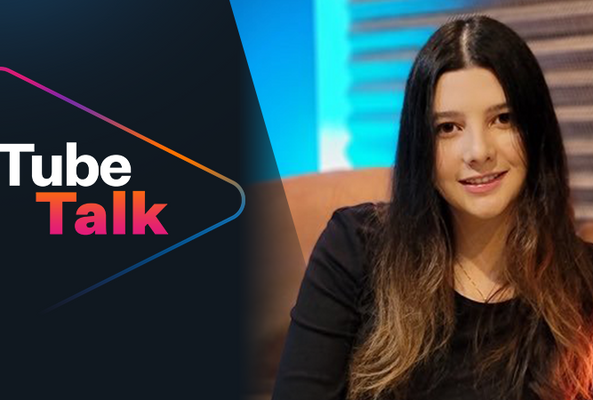Dan got his start on YouTube in August of 2011, recording gameplay videos as a fun hobby while attending school for video production. Joining the vidIQ team in 2020 allowed Dan to combine his hobby and professional talents to now help others grow their own YouTube channels.
Starting a YouTube Career: 7 Steps to Monetize Your Passion
JUMP TO SECTION:
- 1. Prioritize Sharing Your Passion, Not Just Making Money
- 2. Don’t Take Yourself Too Seriously. Be Weird
- 3. Make 100 Videos by Studying Your Favorite Creators
- 4. Make Videos for Humans, Not the YouTube Algorithm
- 5. Build Trust With Viewers Before Monetizing Your Channel
- 6. Have a Broad YouTube Goal to Stay on Track
- 7. Take Breaks
Building a YouTube career is more accessible than ever. Unlike the early days of the app, you can monetize a video in several ways. There’s the standard option of AdSense revenue, or you can make extra money with Super Chats, brand sponsorships, merchandise, YouTube Premium, and Channel Memberships. But the opportunities don't end there. You can expand your audience to Patreon, Twitch, TikTok, and Instagram, creating more opportunities to earn.
Read More: Want to Make YouTube Your Full-Time Job? Master These 5 Skills
Jade Darmawangsa calls this web of opportunity the creator economy. As a digital entrepreneur, she knows the power of making money through various apps and platforms. She has a YouTube channel with more than 380,000 subscribers and founded X8 Media to help creators achieve their goals. Years before that, she was a curious 9-year-old posting her doll collection on YouTube.
“I did it out of passion,” Darmawangsa says. “Now that Gen Z and the youth see that you can not only have fun but make money from it, more people are participating in starting a YouTube channel or a business.”
In this episode of TubeTalk, we chat with Darmawangsa about how to start a YouTube career. From sharing your passion online to making your first 100 videos, she breaks down the steps every creator needs to take:
To learn more about each step, listen to the full episode below:
Want to turn your passion into a YouTube career? Here’s a checklist to get you started.
1. Prioritize Sharing Your Passion, Not Just Making Money
Yes, money is important. But it’s not the only reason to start a YouTube channel. Building a community or helping people thrive is a powerful mission too, on or offline.
“I’m super entrepreneurial,” Darmawangsa says. “I like money. But I find that when you chase money or views, it takes away from the experience. You actually don’t get to that result.”
Viewers are intuitive. They know in their gut when a creator isn’t being genuine or is only seeking views. Be the type of creator that offers something valuable before expecting anything in return. If your passion is as strong as you think it is, sharing it on YouTube should energize you – even when views aren’t coming in.
2. Don’t Take Yourself Too Seriously. Be Weird
The creator economy is thriving because people are becoming more vulnerable. Today’s creators are not afraid to embarrass themselves. They’ll do silly dances on TikTok and roast themselves for falling during one of the eight counts. We’ve entered an era of internet jokes, and that’s something you can monetize.
Brands that sponsor these creators are doing the same thing. They’ve embraced meme culture and are paying influencers to have fun while promoting their products.
“It’s just so interesting how we’re shifting away from this very produced, commercial TV consumer world to, ‘Let’s make Chipotle a meme,’” Darmawangsa says. “It’s just so strange. You look at Dogecoin, and it’s just a dog on a coin. I think it’s just so playful, and honestly, fun.”
3. Make 100 Videos by Studying Your Favorite Creators
You don’t need original content to be successful on YouTube. You just need to be helpful to your audience. That means posting content that solves a problem, whether that’s educating people on a specific topic or entertaining them when they’re bored. Plenty of creators in your niche have mastered this process. All you have to do is study their approach to providing that value.
“Make a list of your top 10 YouTube creators,” Darmawangsa says. “Then go to their YouTube profile, figure out their top 10 videos, and just recreate them. This will give you 100 video ideas…. Just recreate content in your own way.”
Read More: The One Thing New YouTubers Should Focus On
Making 100 videos gives you valuable experience. You’ll learn how to speak to a camera, edit videos, and post consistently. That puts you in a position to learn the advanced side of YouTube, such as tracking video analytics.
4. Make Videos for Humans, Not the YouTube Algorithm
It’s impossible to crack the YouTube algorithm. It doesn’t have any hackable, crackable features, because that’s not how video recommendations work in 2021. YouTube’s primary goal is to learn. The company wants to know what people like so it can suggest more of those things to viewers.
“All it’s trying to do is understand creators, understand viewers, and match-make,” Darmawangsa says. “That’s literally it.”
Read More: YouTube Algorithm Guide - How Your Videos Are Recommended to Viewers
If you want to know what YouTube knows, do as YouTube does. Study your audience and figure out what they want from you and your content. Are your viewers young professionals or homemakers with children? Identify those people and map out their lives – what they like aesthetically, their routines, their challenges, and their lingo. Use those cultural markers to create content just for them.
5. Build Trust With Viewers Before Monetizing Your Channel
Most creators want to monetize their content as soon as possible. But it’s better to build trust with your audience before placing 12 ads throughout your videos. If you want to sell products, this advice becomes more urgent. People buy things from people they trust, and you could damage your relationship with viewers if you move too fast.
Before Darmawangsa could sell products, she had been creating for 10 years. In the meantime, she made money helping other creators improve their channel.
“I worked for a bunch of creators before I made my own income,” Darmawangsa says. “I edited videos for other people. I made channel banners. I volunteered my time translating captions. One of the best things you can do is work for another creator. I think the biggest misconception is that there are only two ways to profit – brand money and creator money. The other one is the peer-to-peer economy.”
As you build trust with viewers, find another way to make money. That will take the pressure off of you to instantly have a lucrative channel.
6. Have a Broad YouTube Goal to Stay on Track
When you finally get what you need to monetize your channel – 1,000 subscribers and 4,000 Watch Time hours – YouTube gets interesting. At that point, you’re making money from your passion, which is good. But what’s the next step?
“I think it depends on your goal,” Darmawangsa says. “What are you trying to build? If you’re trying to build an AdSense machine, you have to milk those keywords and do YouTube SEO. If your goal is to build a community where you can sell products and grow an audience, it’s a different approach.”
No matter what your goal is, continue to do what’s working. Make a follow-up video if one topic gets lots of views or goes viral. As you create, keep your broad goal in mind to make sure you’re headed in the right direction.
7. Take Breaks
Growing on YouTube is about attracting viewers and convincing them to watch more videos. But you have to feel like doing it. If your heart isn't in it, take a break. It's OK to prioritize your wellness. YouTube isn’t going anywhere.
A healthy creator knows they can’t make videos around the clock. Having a hobby outside of YouTube helps you disconnect and recharge.
“I think by unplugging, you’re going to reach your goal a little bit more – not faster but a little better,” Darmawangsa says. “Less stressful.”
Joining YouTube is the first step to success. After that, build multiple income streams with these seven tips.



